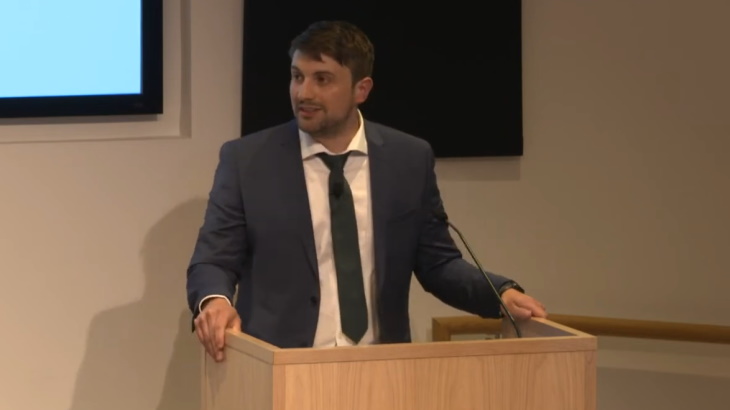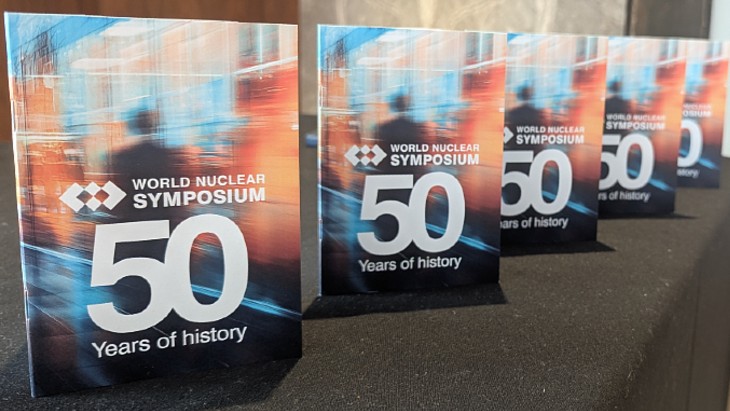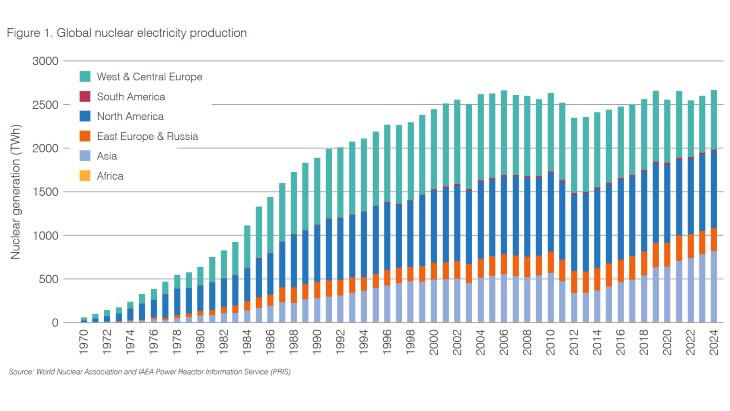The front end of the nuclear fuel cycle market has been rebalancing itself since 2011, he said. Supply has been significantly below annual requirements, especially in uranium mining and conversion. This gap has been filled by the drawdown of global inventories, via the enrichment sector, which has been in oversupply.
Operational uranium assets - unlike uranium mines - cannot be easily put into care and maintenance in response to market imbalances. "You don't just switch them off - they just run," he said. "So what we do instead, we change our operations to better match demand with our assets and supply."
Natural uranium contains 0.7% of the U-235 isotope - with the remainder mostly comprising the heavier U-238 isotope. Light water reactors - pressurised water reactors and boiling water reactors - use uranium enriched to 3-5% U-235 in their fuel. This is achieved commercially by passing gaseous uranium - uranium hexafluoride, UF6 - through centrifuges to enrich the level of fissile U-235. The process also produces a stream of material - or "tails" - which is depleted in U-235.
Where enrichment supply outstrips demand, enrichers will turn to a process known as underfeeding: operating enrichment plants at a lower operational tails assay so that less raw uranium feed is needed to gain the same amount of enriched output. This enables some of the natural uranium to be set by.
"We're effectively saving UF6," Jones said. "So do enrichers just ignore the market signals? Do they feel the pain? The answer is 'Yes' and 'Yes'."
Looking back at the past 10 years, enrichment projects have been delayed and cancelled, Jones said: a new enrichment project, at Eagle Rock in the USA, was cancelled; the bankruptcy of USEC, with prices cited as being too low; and delays to the GLE laser enrichment project. "Urenco ourselves have stopped and scaled back our expansion. We've been through the same hardships as some of the utilities …. We've had to reduce people, costs and written off billions of dollars-worth of assets - there is pain."
Other enrichers have pursued different strategies, he said. China's enrichers serve a domestic, growing market and their objective is to grow along with their demand base. Russia - which is the world's largest enricher "by far" - has over the past decade maintained its very large enrichment capacity.
Looking at the primary enrichment market as a whole, there are clear imbalances between supply and demand on a regional basis, Jones said. "So, if the question is energy independence, how do you address those gaps?"
The answer, he said, lies in both short-term and long-term, approaches. Near-term disruptions can be addressed by drawing down strategic inventories across the industry, and re-optimising operations to fully employ enrichment capacity. "Enrichers can stop underfeeding - but you've really got to think that one through," he said. "It sounds trivial - but the front-end fuel cycle is a highly integrated system. Where will be the pinch-points?" Conversion would then become a bottleneck if such a strategy were pursued, he said.
In the longer term, enrichers can build new capacity. "But that's not an overnight strategy - it's going to take time. And like rest of fuel cycle, to underpin that investment, there's going to have to be long-term commitments," he said. "We've got to ramp up our production of centrifuges, we need to invest in the workforce, we need storage, we need deconversion facilities, transportation ... there's a lot to think about."
To ensure security of supply, we must also think about the evolution of the fuel cycle, Jones said. This next generation of nuclear fuels will include LEU+ for existing reactors - fuel enriched to above 5% U-235, and high-assay low-enriched uranium - HALEU - for next-generation reactors. Production of uranium enriched to these levels will require dedicated, suitably licensed, facilities. "I can confirm today that we (Urenco) are thinking about this, and we've got our preferred sites - one in the UK and one in the US."
"We're all on this path to a net-zero society. We all agree it needs nuclear power - the only proven, secure low-carbon technology for electricity generation, and - if it's set up right - a power source that can provide security of supply and energy independence."





_17992.jpg)
_58913.jpg)
_75800.jpg)





